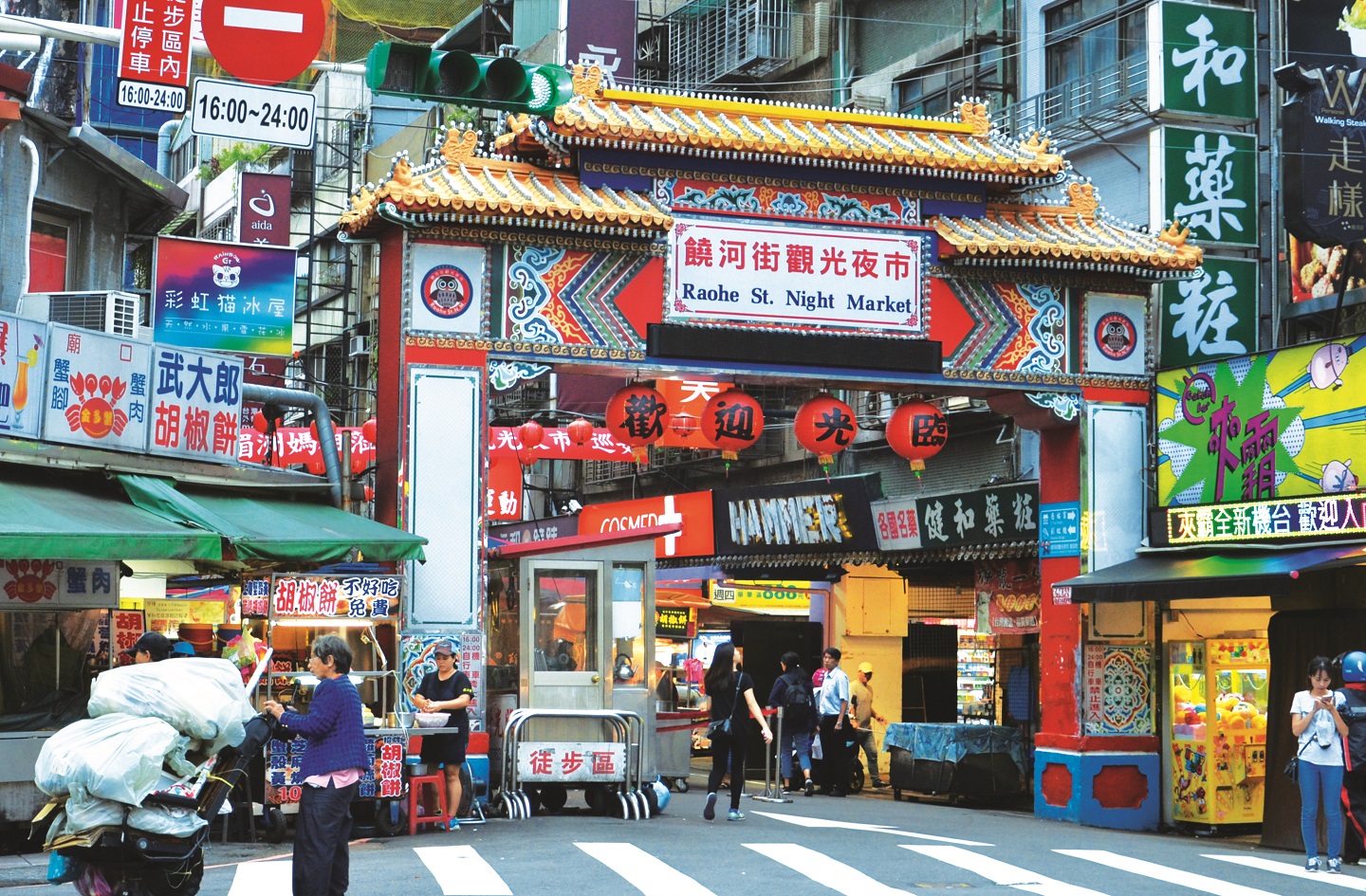
Raohe Night Market. (Photos: Lee Yu Kit)
As with many Asian countries, there’s a vibrant street food culture in Taiwan. Combine that with another Asian institution — the informal night market — and you have the irresistible invitation to go food-combing and snacking.
Although it is not limited to Taiwan, the notorious “stinky tofu” is synonymous with the country among foodies. The best place to try this is Taiwan’s tofu capital, Shenkeng Old Street.
Once a sleepy rural agricultural town located a distance to the east of Taipei, Shenkeng is a bustling town with visitors converging on a short pedestrian street lined with small eating shops on both sides. The most famous — and the most malodorous thing — is stinky tofu, which looks remarkably innocuous, like regular tofu, except that it emits an unheavenly stink.
You get a little whiff of it every now and then, and look around for the decaying animal carcass, or the clogged drain, or to see who’s just taken off his sweaty socks.
Stinky tofu is usually encountered in large tubs, bathed in a deep red broth the colour of something spilt from a gutted animal. It is often accompanied by cut bamboo shoots stewed in a clear broth that tastes very nice and has a crunchy texture. It’s sweet as well — the bamboo, not the tofu.
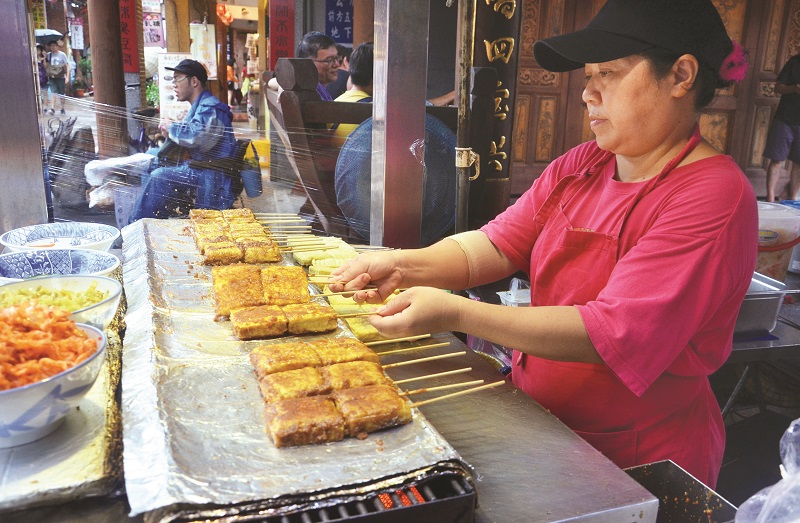
For those uninitiated in the esoteric pleasures of putting a piece of foul-smelling tofu into your mouth, the recommendation is to try the barbecued version first as it’s a much diluted version. Cubes of the offensive tofu are impaled on a skewer and slathered with a thick brown sauce before being grilled. This is served with a little pickled vegetable, spicy or non-spicy, and some fried cabbage.
You could always hold your breath before taking your first bite because it has the texture of regular grilled tofu, and it’s good as well. The manly thing to do is to take it on the chin and experience it full-flavoured without holding your nose. The smell, even in diluted form, can be overwhelming, even choking, and it takes some effort not to throw it away and flee. Remarkably, the next bite and the next is just as bad. It doesn’t get any easier as you work your way through the lot. The lesson here is not to allow your Taiwanese host, if you have one, to buy you stinky tofu since he or she will insist on you finishing it — well meaning in a deadly way.
Besides stinky tofu (actually fermented tofu with especially evil bacteria), there are many other things to sample here: the ubiquitous grilled or deep-fried squid is worth trying as it’s quite tender, not too chewy and quite mild, although occasionally ammonia-flavoured.
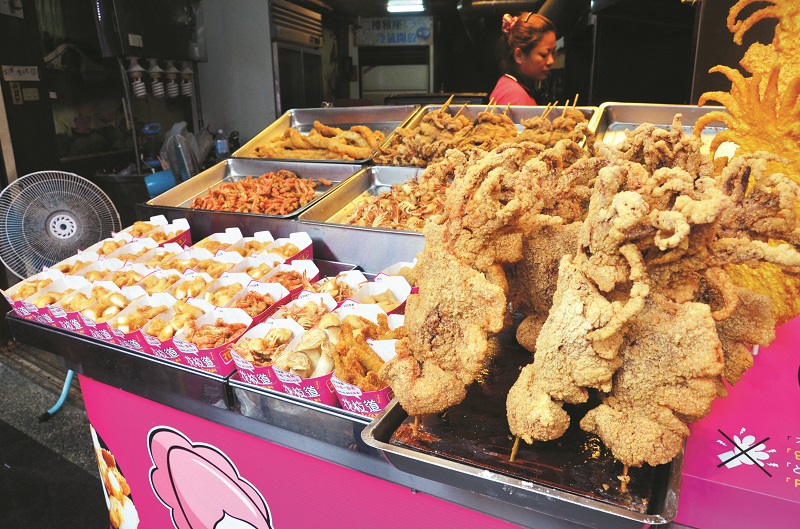
Tofu ice cream looks just like its dairy version — soft, fluffy white whirls in a biscuit cone — and tastes of smoky tofu. Not at all offensive and a little bland as it’s unsweetened.
There’s plenty of traditional treats, what was once fresh food rendered unrecognisable, processed, pickled and wrapped in plastic and of various dour shades of black, brown and green. At least one of these is Lor Hon Kor (Buddha fruit) beaten into a black paste with a tart taste from the addition of spices. There are “iron eggs”, which would reduce a hen to tears if she saw what had happened to regular eggs, rendered black and shrunken.
Not everything is tart, salty or tangy: mua chi is bouncy flour cubes coated in fine sugar and pounded peanuts, and there’s an interesting snack of popiah skin, onto which nutty shavings are sprinkled from a large block with a carpenter’s plane. Scoops of ice cream are added and the popiah skin wrapped around the whole thing.
There’s thong yuen (coloured flour balls in a sweet broth), glutinous rice and bean dumplings, noodles, mysterious things in steaming vats of soup, bright-coloured drinks and lots more. Indeed, Taiwanese ingenuity with street food is admirably extensive.
But stomach space is limited and the eating landscape vast. Many street markets specialise in one or two items, and Taiwanese, being voracious foodies, tend to throng these speciality food places.
The Fengjia night market is the largest in the city of Taichung. As with all street markets in Taiwan, it is a colourful, vibrant place with a wide variety of eats and, also like all the street markets, scrupulously clean. There are large trash bags in the middle of the street, but even in places where there is none, there is no litter, not even a wrapper or a discarded cigarette butt. Even more astonishing are the toilets serving the night markets. Not only are they free but they are also clean.
You have to queue up for the Ming Lun egg pancakes, which are deceptively simple: a scoop of flour mix on a hot griddle, flattened into a thin sheet, into which an egg and chopped spring onion are sprinkled. The sheet is rolled into a crispy roll, wrapped in paper, and the result is astonishingly good.
You also have to wait in line for tubs of mee sua in a hot, thick, brown sauce. This is a common snack with various accompaniments, such as oyster or animal intestines, but the popular version in this night market is vegetarian. Also much sought after, the Taiwanese-invented, self-descriptive “small intestine wrapped in big intestine” is formed into sausage-like rolls, skewered, grilled and served with your choice of topping, such as melted cheese or wasabi sauce. As for the taste, don’t ask.
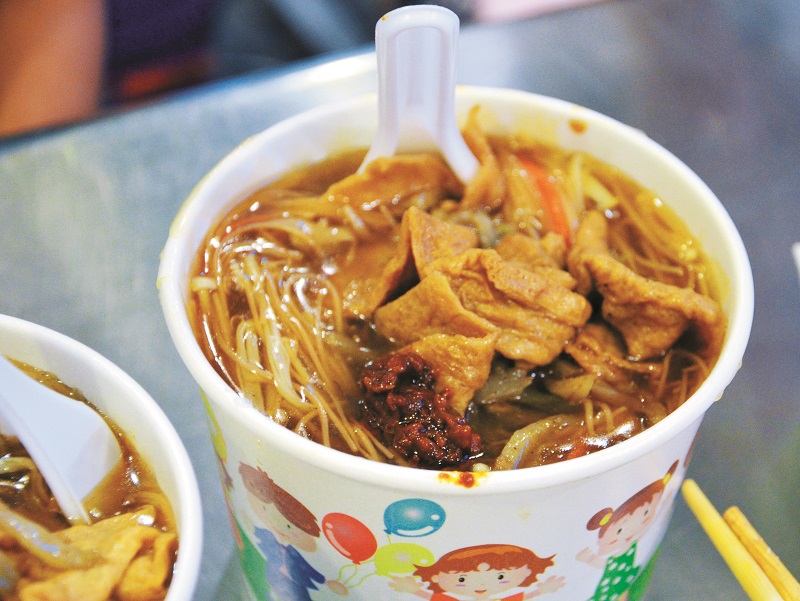
In this day and age of electronic sophistication and smartphone games, old world games remain popular with the Taiwanese teenage set. Tainan city’s Anping Old Street has a number of these, including mechanical pinball machines. A spring-loaded ping-pong ball is propelled down a sloping board under a sheet of glass, randomly traversing an obstacle course of nails, with the odd chance of falling into a number of ping-pong-sized cut-outs in the board.
Anping Old Street with its historical dwellings abuts Fort Zeelander, a Dutch fort that dates back to the 17th century, one of the earliest instances of European presence on the island. One of the food specialties here is the macabre-sounding “coffin bread”, which is nothing more than a thick slab of bread with a cut-out stuffed with meat and covered with another thin slice of bread.
Taipei has a number of street markets with the largest being Shilin Night Market. It is vast, sprawling, very busy and also amazingly clean. The much smaller Raohe Night Market is a single road converted into a pedestrian mall but it is one of the oldest in the city. There’s a stall here where a snaking, orderly queue waits patiently around a queue barrier, the sort you encounter in banks and airports. The stall serves “pepper biscuits”, which are actually dumplings containing marinated, minced pork with a generous helping of chopped spring onions. The dumpling is covered in oil, sprinkled with sesame seeds and stuck by hand to the inside of a tandoori-like oven. You pay and specify how many you want at the head of the queue and the stall-helper hands over freshly baked dumplings hot from the oven. Eaten fresh, they’re mouth-wateringly delicious.
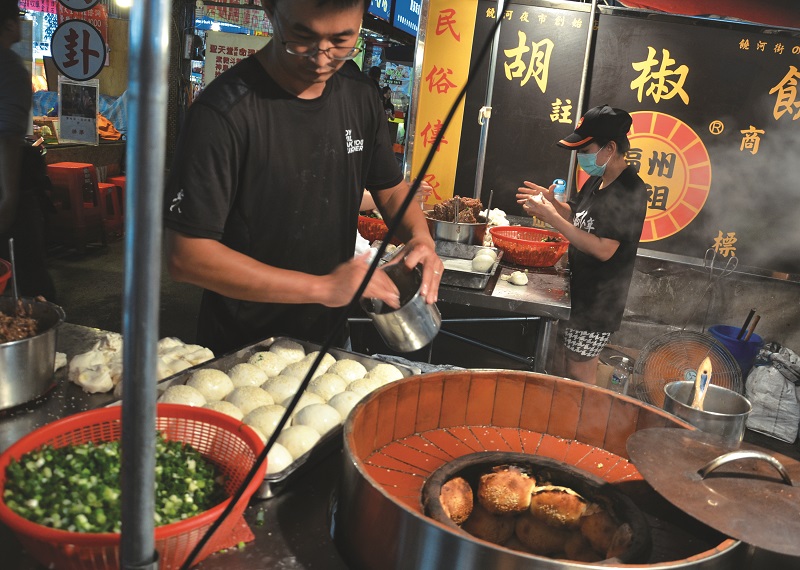
Plastic stools and narrow tables invite you to sit and try a bowl of the local version of bak kut teh, scooped from a boiling vat and containing bits of meat on pork bones in a light herbal, aromatic broth. A bowl of rice, topped with marinated minced fatty pork, is usually taken with the soup.
You could visit these night markets numerous times and not exhaust the different types of snacks, such is the variety and ingenuity.
These night and street markets are colourful, bright and busy, providing insights into the lives of ordinary Taiwanese, contemporary fashions and trends, even the dating habits of the young and restless. They are an inextricable aspect of the society, where inexpensive and tasty snacks are widely available, catering for a wide variety of tastes. And if any further excuse is needed, they are a delicious reason to visit Taiwan.
This article first appeared on Jan 29, 2018 in The Edge Malaysia.


